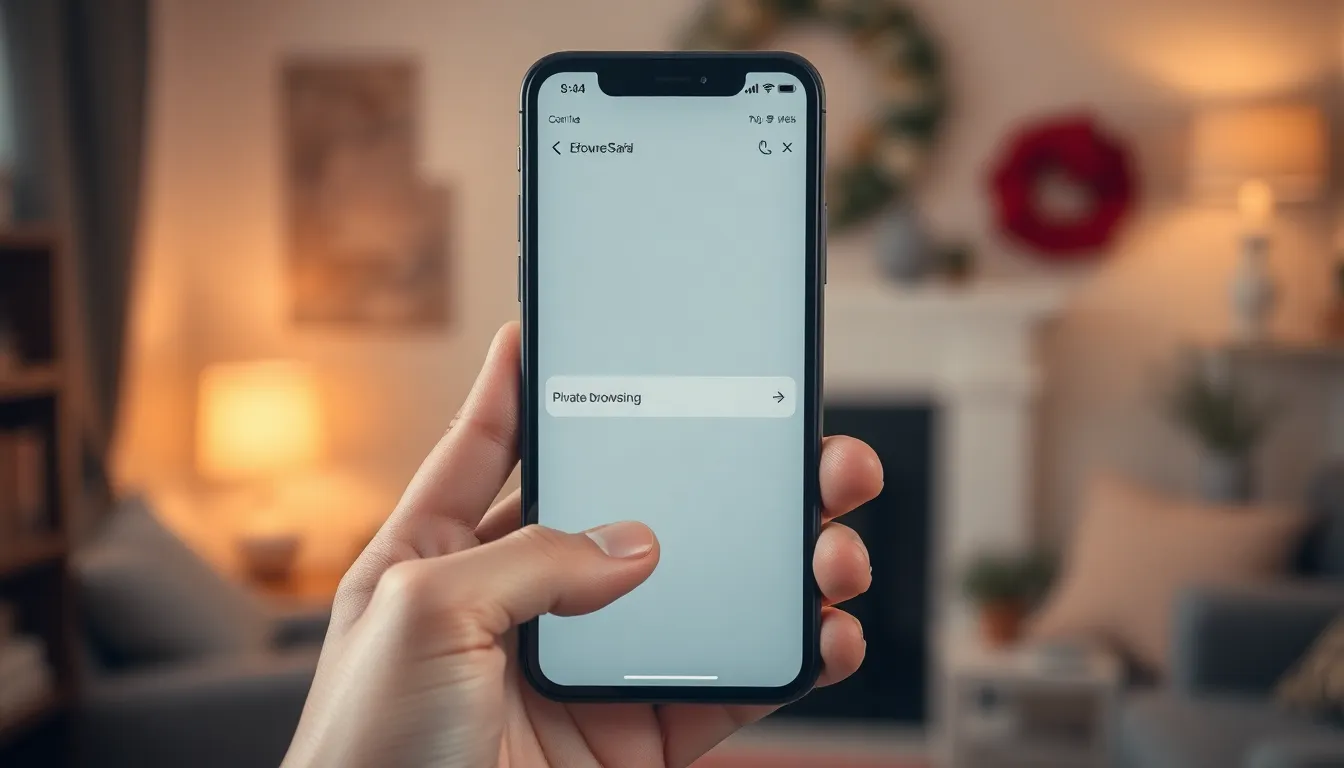Table of Contents
ToggleIncognito mode on an iPhone can feel like a secret hideout where browsing history disappears faster than a magician’s rabbit. But what happens when the thrill of anonymity wears off and it’s time to return to the real world? Whether you’re trying to book that surprise vacation or just want to check your social media without the cloak of invisibility, getting out of incognito mode is essential.
Understanding Incognito Mode
Incognito mode provides a private browsing experience on an iPhone. This feature allows users to surf the internet without saving browsing history.
What Is Incognito Mode?
Incognito mode functions as a private browsing setting that prevents websites from tracking user activity. Browsers like Safari and Chrome include this mode to enhance user privacy. In this mode, browsing history, search queries, and cookies remain confidential. However, it’s important to note that network administrators and websites can still detect internet activity. Users benefit from this feature when they seek to browse discreetly or want to log into multiple accounts simultaneously on the same device.
Why Use Incognito Mode?
Using incognito mode serves various purposes for users. Individuals often turn to this feature when shopping online, ensuring that search results aren’t influenced by past activity. Accessing sensitive accounts without leaving a trace also motivates users to engage this mode. Parents may use it to monitor children’s activities without impacting the browsing data. Additionally, it provides a safe environment for accessing websites that may require sensitive information, such as personal finances or email logins.
Exiting Incognito Mode on iPhone

Exiting incognito mode is straightforward, allowing users to return to regular browsing quickly. Follow these steps based on the browser in use.
Using Safari
First, open Safari on the iPhone. Tapping the tab icon in the lower right corner presents all open tabs. Users should look for the “Private” button, which indicates incognito mode is activated. Tapping this button exits private browsing, returning to normal mode. Browsing history and website data will no longer remain hidden.
Using Other Browsers
For browsers like Chrome or Firefox, launching the app is the first step. Users navigate to the tabs icon, usually positioned at the bottom or top of the screen. In Chrome, a “New Tab” button allows users to leave incognito mode. Firefox users tap “Private Browsing” to switch back. This process restores regular browsing and associated history.
Troubleshooting Common Issues
Exiting incognito mode on an iPhone can sometimes present challenges. Users may encounter a few common issues that prevent a smooth transition back to regular browsing.
Incognito Mode Not Closing
If incognito mode won’t close, users should first check the tab count. A significant number of open tabs may cause the browser to lag. Closing each tab individually often resolves this issue. In Safari, tapping the tab icon permits a view of all open tabs. Tapping “Done” can help exit incognito mode entirely. Users can also try force quitting the browser app by swiping it away from the app switcher. Reopening the browser usually restarts in normal mode.
Issues with Browser Settings
Browser settings can interfere with exiting incognito mode. Users should confirm that they haven’t enabled any unusual restrictions in settings. Checking for misconfigured settings or parental controls might clarify the issue. It’s also vital to ensure the browser is up-to-date, as outdated versions can cause functionality problems. If issues persist, users can consider resetting browser settings to default. This often resolves lingering issues and restores proper functionality.
FAQs About Incognito Mode
Incognito mode generates various questions regarding privacy and data management. Below are common inquiries and their answers.
Privacy Concerns
Users often worry about how incognito mode protects their privacy. While this feature prevents the saving of browsing history and cookies, it doesn’t guarantee complete anonymity. Websites still retain the ability to track visitors. Network administrators can monitor online activities as well. Many individuals choose incognito mode for sensitive activities, but it’s essential to understand that this mode does not hide your actions from internet service providers or employers. Privacy enhances with incognito mode, but limitations exist that users need to acknowledge.
Data Storage
Incognito mode doesn’t store any data related to browsing sessions. This includes history, cookies, and site data that regular browsing retains. When a user exits incognito mode, restored access to stored data occurs. While it offers a clean slate for online interactions, shutting down the browser completely deletes the session data. Understanding the implications of data storage helps users make informed decisions regarding online privacy. For instance, temporary files or caches created during incognito use remain until the session is closed.
Exiting incognito mode on an iPhone is a simple process that restores normal browsing functionality. Users can quickly switch back to regular mode by following the outlined steps for their preferred browser. This transition is essential for tasks that require saved data or browsing history.
While incognito mode offers a level of privacy, it’s crucial to understand its limitations. Users should remain aware that their online activities can still be tracked by websites and network administrators. By knowing how to navigate between incognito and regular browsing, users can enjoy both privacy and convenience in their online experiences.







